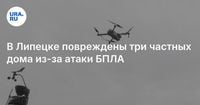On the night of April 4, 2025, a series of drone attacks rattled the Lipetsk region and parts of the Moscow area in Russia, marking a significant escalation in hostilities. According to the Ministry of Defense of the Russian Federation, Russian air defenses successfully intercepted and shot down a staggering 107 drones throughout the night. The breakdown of these interceptions includes 34 drones over the Kursk region, 30 over the Oryol region, 18 over Lipetsk, and several others across Kaluga, Rostov, and Moscow regions.
Residents of Lipetsk reported hearing approximately 20 loud explosions, with the attacks likely aimed at key infrastructure, including the Novolipetsk Metallurgical Plant (NLMK) and a local airfield. This surge in drone activity has raised alarms among local authorities, prompting the governor, Igor Artamonov, to issue urgent safety warnings to residents. He advised them to stay indoors and away from windows during the attacks, emphasizing the need for caution as the situation unfolded.
Earlier in the evening, around 23:27, a red level of danger was declared in Lipetsk, which indicates a high threat of drone attacks. This warning system is designed to keep residents informed and safe during heightened military activity. The air raid siren sounded three times, signaling the imminent danger. Fortunately, there were no reported casualties, although three private homes sustained damage from the attacks.
Local sources, including Telegram channels, attributed the drone strikes to the Ukrainian Armed Forces, suggesting that the drones involved may have been of the 'Lyuty' type, known for their kamikaze capabilities. This incident follows a pattern of increased drone activity in the region, as Ukrainian forces have attempted similar strikes in the past, notably in February 2025 when over a dozen explosions were reported in Lipetsk.
In a related incident, on the same day, the Ministry of Defense confirmed that a Ukrainian drone attack had disrupted electricity supply to several domestic consumers in the Lipetsk region. This attack targeted an energy facility, further complicating the situation for residents already on edge from the earlier bombings.
As the conflict continues to evolve, the implications for local infrastructure and civilian safety remain a pressing concern. The NLMK plant, a significant player in Russia's metallurgical industry, produces critical materials used in various sectors, including construction and energy. The plant's vulnerability to drone attacks highlights the broader risks posed by the ongoing military confrontations.
Furthermore, the Russian authorities have been vocal about the need for vigilance among citizens, particularly with the new wave of drone warfare. Governor Artamonov reiterated the importance of avoiding contact with any debris from downed drones, advising residents not to film or touch any fallen aircraft, which could pose additional risks.
In the wake of these events, the Russian aviation authority announced restrictions on operations at key airports, including Vnukovo, Domodedovo, and Zhukovsky, as a precautionary measure. These restrictions aim to ensure the safety of air travel in light of the heightened threat from drone attacks.
As the situation develops, the response from both the Russian government and military will be closely monitored. The use of drones in warfare has transformed the dynamics of conflict, and the implications of these technologies will continue to shape the battlefield in unpredictable ways.
In the meantime, residents of Lipetsk and surrounding areas are left to navigate the uncertainties of their safety, as the specter of further attacks looms large. The ongoing conflict has not only disrupted daily life but also raised questions about the future of military engagements in the region.
As tensions escalate, the international community watches closely, recognizing that the stakes are high not just for those directly involved but for regional stability as a whole. The events of April 4 serve as a stark reminder of the complexities and dangers inherent in modern warfare, where technology plays a pivotal role in shaping outcomes.








